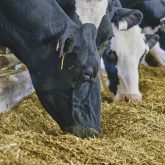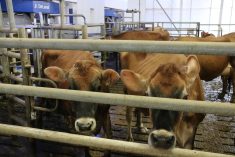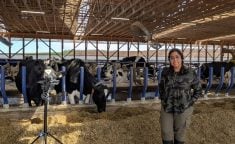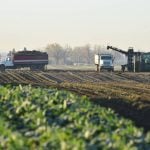Feeding cows that are milked with a robot is more complicated than you think. It is not enough to add feed to the robot. It is necessary to ensure that the cow’s complete ration is adequate.
How much feed should be added to the robot? What is the impact on cow performance? What will be the effect on the ingestion of the partial mixed ration (PMR)? For several years, researcher Greg Penner of the University of Saskatchewan has been interested in these questions.
What is the biggest feeding challenge for a herd that is milked by robot?
Read Also
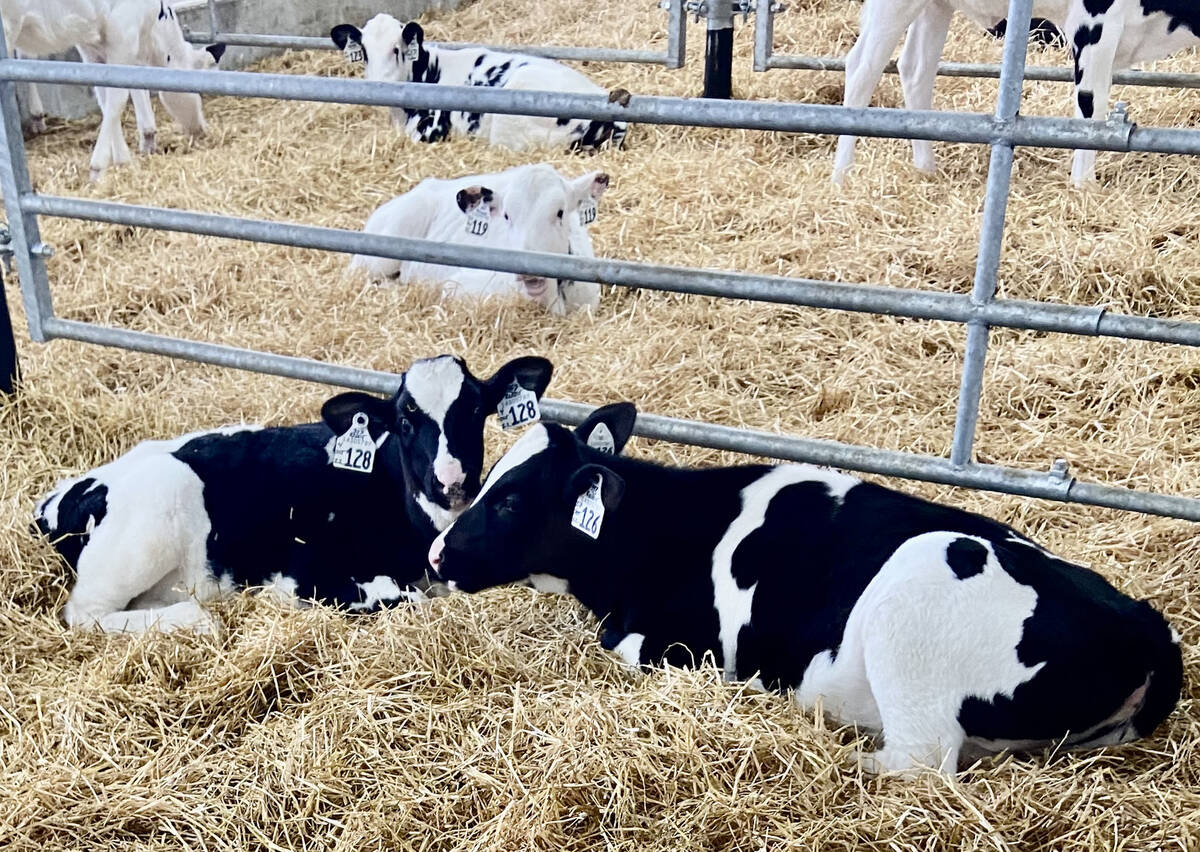
Back to the drawing board for sexed semen fertility ratings
Lactanet, the national genetic evaluation and dairy data provider, goes back to the drawing board with its sexed semen fertility rating index prototype.
Penner: I believe there are several challenges to highlight. The first thing is that producers are looking to find strategies that encourage cows to go to the automatic milking system, often without additional work. We call it “pushing the cows”. We need to attract these cows to visit the automatic milking system.
The other thing is that the detailed reports tend to be different from what we find in our research studies. This is a problem because growers will adopt strategies that are recommended by their consultant or equipment supplier, but the research does not seem to support these recommendations. I believe that this is a challenge that does not allow them to optimize costs when it comes to encouraging attendance at the robot or providing suitable nutrition for each cow.
What is the main difference you see between recommendations from consultants and research?
Penner: The main difference is that in the detailed reports there is a belief that by feeding more feed into the robot the cow will go more often, but we don’t see that in the research.
The second challenge is that we believe we can offer a personalized diet to a specific cow, based on the fact that we can change the amount of concentrates in the robot. But they forget the impact this will have on PMR (partial mixed ration) consumption.

Research shows that by increasing feed consumption in the robot, they eat this feed, but they also reduce their PMR consumption. And sometimes, they will even reduce their PMR consumption more than their increase in feed ingestion. So, we do not provide a precise diet, but rather we provide scenarios whose results are unpredictable.
So, we know the quantity of feed served in the robot, but it is very difficult to know the quantity of PMR that the cow will eat. That’s it?
Penner: Exactly. The robot measures how much feed was fed to the cows, but it does not tell how much PMR these cows consumed. That’s at the individual level, but when the cows go into the feeding area, all the cows will eat the same PMR. On the farm, it is impossible for them to know the amount of PMR that is consumed by a specific cow. They can only assess the group average.
In this case, what is your recommendation?
Penner: Our research has shown that a moderate amount can be added to the robot. And the opportunity to adjust a ration at the individual level has less potential than initially believed. We can vary the quantity of feed, but with a more moderate variance.
Some research reports show that cows receive up to 12 kg of feed from a robot. Our research results – and others – demonstrate that 6 kg per day would be closer to the recommended maximum.
What is the most important aspect to understand for dairy farmers who want to robot feed cows?
Penner: If we have an important message to convey, it would be that feeding cows to the robot is much more than simply adding feed to the robot.
Probably more than 80 per cent of the diet comes from the partial mixed ration. We should therefore not only focus on a small part of the ration, but rather on both aspects of the ration.
It is also important to consider both controlled studies (in research centres) and studies based on surveys (on-farm results). Thus, we can have a broader and more complete vision of feeding management for robot cows.
What’s special about PMR?
Penner: I think the main thing we should focus on is that all cows in the herd have access to the same PMR. So we need to have an idea of how our complete diet is formulated, because as you understand, we can only change the amount of cubed feed.
We therefore need to ensure that our pelleted feed is balanced according to our RPM formulation, and that together they can achieve the production levels of all cows in that group.
Cows in early lactation are in the same group, but they have specific needs. They produce more milk and need more energy. Do you compensate with pelleted feed?
Penner: That’s a good point. This is a generalized perception. We have just completed a study of cows in transition: a low and a high allocation of pelleted feed, starting at day three in milk until day 56. We observed that increasing the rate of feed fed had no real effect on the number of visits to the robot, on milk production, or even on the composition of the milk.
In fact, cows fed lower pellets in the robot had higher fat and protein levels than cows fed more feed.
The way to explain it is that those cows that received less feed in the robot ate more PMR.
So we cannot just expect that the feed will overcome the PMR. We need to move away from thinking in terms of just one component of the diet, and instead emphasize and consider the fact that the diet is made up of both feed and PMR. And in accounting terms, the PMR accounts for a greater part of the nutrients absorbed by the cows in the robot.
Therefore, providing more feed at the start of lactation will not meet the cow’s energy needs. Rather, what is happening is that PMR consumption is increasing.
Why is this so important for the cow?
Penner: When they increase their feed consumption by one kilogram in the form of dry matter, they reduce their PMR consumption by 1.3 kg. So if you calculate the change in energy consumed, it can be zero. So, they eat more feed, but they eat less PMR. And because the feed is denser than the PMR, they further reduce PMR consumption, leading to an energy balance of zero. Thus, feeding more feed may not increase energy absorption.
And feed is more expensive than PMR.
Penner: Yes. Definitely.






